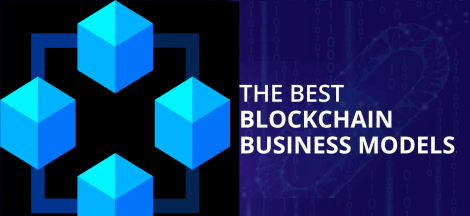High school in Canada once followed a script. You showed up at eight-thirty, moved through fixed classes in forty-five-minute increments, and the final bell dictated when you could leave. Your academic record depended on your ability to conform to that system, not necessarily on how you learned best.
Teens today are refusing to play by those rules. They are rethinking education as something fluid, shaped by technology, and designed around their lives. The option to earn credits online is no longer an afterthought. It is the alternative that increasingly makes more sense.
Convenience Isn’t Just a Buzzword
The word “convenience” often gets dismissed as shallow, but for teens juggling multiple priorities, convenience is survival. Between part-time jobs, sports, arts programs, caregiving responsibilities, and the constant buzz of modern life, a rigid timetable no longer works for everyone.
Earning credits online offers flexibility that is both practical and strategic. Students can study on weekends, during evenings, or early mornings. A teen who is training competitively in hockey can finish assignments on the road. A student who works evenings can log in to lectures when the rest of the household is asleep. Convenience is not laziness. It is the architecture that allows students to manage competing demands without burning out.
What It Really Means to Earn Credits Online
There is still skepticism that earning credits online must be easier or somehow diluted. The perception is that online learning is a shortcut, a way to bypass “real” academic work. The reality undermines that assumption.
Accredited online schools in Canada are held to the same provincial standards as brick-and-mortar schools. Students write exams, submit essays, and complete lab simulations in virtual environments. Many online platforms integrate proctoring tools to ensure academic integrity. The only shortcut online education offers is cutting through inefficiency. Instead of waiting for an entire class to finish a unit, students move at the pace that works for them.
Access Expands Opportunity
Choice in education has always been uneven. A student in a metropolitan area like Toronto or Vancouver might find a range of electives, advanced placement courses, and niche programs. A student in a smaller community might have only the core subjects. That disparity can dictate future opportunities.
Online credits help close the gap. By exploring how to earn high school credits online, students can take electives in business, media studies, or advanced sciences that local schools may not have the resources to offer. They can also complete prerequisites for competitive university programs without being limited by geography. For many teens, this is the difference between building an education that reflects their goals and settling for whatever happens to be available.
The Mental Health Factor
The mental health of teens has become a national conversation in Canada. Stress, anxiety, and depression are climbing, and school environments often contribute to the problem. Traditional schooling can feel relentless. The early mornings, the crowded hallways, the pressure to perform socially and academically. All of it compounds.
Online credits shift some of that burden. A student can pause when overwhelmed, review material at their own pace, and avoid the performance pressure of being “on” all day in front of peers. The Ontario Ministry of Education has recognized the value of alternative pathways, noting that flexibility can be crucial in supporting student well-being. This is not about avoiding school but about reshaping it to reduce harm.
Parents Are Seeing the Value
At first, parents worried online credits would encourage disengagement. They feared teens would sit unsupervised, scrolling rather than studying. That perception is shifting as more families see tangible results.
Parents of student athletes recognize that online credits allow their children to balance training and education without compromise. Parents of teens with learning differences see online environments as a chance for their children to learn without stigma. Parents who work irregular hours appreciate that their children’s schedules can better align with family life.
Families are discovering that discipline looks different in a digital environment. It is not about showing up in the same seat every day. It is about managing time, setting priorities, and learning self-regulation. Skills that matter long after high school ends.
Preparation for the Future of Work
Education is supposed to prepare students for the world they will enter, not the one their parents grew up in. The future of work is already digital, flexible, and global. Many careers now involve remote collaboration, asynchronous communication, and project management software.
Teens who earn credits online are developing these skills by default. They are learning how to navigate online platforms, submit digital assignments, attend video discussions, and communicate professionally through writing. According to the OECD, adaptability and digital literacy are among the most critical skills for the workforce of the future. Teens who have already mastered these through online schooling enter adulthood with an edge.
Breaking Geographic Barriers
In the past, where you lived dictated what opportunities you had. Students in urban centers could access advanced programs, while those in remote or rural regions had to settle for fewer options. This inequality wasn’t a matter of choice but logistics.
Earning credits online erases that barrier. A student in Northern Ontario can now take the same biology course as a student in downtown Ottawa. A student living abroad temporarily can stay aligned with Canadian education requirements. The promise of education as a right rather than a privilege tied to location becomes more real in a digital system.
Addressing the Digital Divide
This progress does not come without complications. Not every Canadian household has reliable internet access or enough devices to support multiple children learning online. UNESCO has emphasized globally that digital education can only be as equitable as the infrastructure supporting it.
For online credits to reach their full potential, Canada must address the divide in digital access. Without investment in broadband and devices, the students who could benefit most risk being left behind. The conversation about online education is also a conversation about digital equity.
The Socialization Myth
Perhaps the most stubborn criticism of online schooling is the fear that teens will lose out on social interaction. The argument is that without hallways, cafeterias, and extra-curriculars, students miss the intangible lessons of friendship and community.
This view ignores how teens already socialize. Digital platforms, gaming communities, group chats, and video calls have become standard parts of their lives. Online high school courses often include collaborative projects, discussion forums, and peer review systems that replicate (and sometimes surpass) the collaboration of traditional classrooms. Socialization is not eliminated. It is reshaped to match the way young people already live.
Stories from Students Themselves
Talk to a teen who has taken credits online, and their perspective is clear. They talk about freedom. They talk about structuring their education around passions rather than restrictions. They describe waking up without dread, learning without constant interruptions, and being able to move faster when they are motivated.
One student might explain how online credits allowed them to pursue acting auditions without falling behind academically. Another might share that they could finally take a computer science course that was unavailable in their small-town school. Their stories are not about escaping school. They are about reclaiming it.
A Global Perspective
Canada is not alone in this shift. Countries across Europe and Asia are investing heavily in digital education. The UNESCO Digital Education initiative highlights how online learning is expanding globally, offering continuity and innovation. Canadian teens are not experimenting in isolation. They are part of a worldwide movement toward a model of education that prioritizes access and personalization.
Why This Matters Beyond Graduation
Earning credits online is not just about getting a diploma. It is about preparing for a lifetime of learning. In a world where adults are constantly retraining and upskilling, learning how to self-direct education is invaluable. Teens who master this skill in high school are better positioned to adapt in university and beyond.
This isn’t about making school easier. It’s about making it relevant. When teens choose online credits, they are not lowering standards. They are raising expectations for what education can and should be.
The Future of High School Is Already Here
The question is no longer whether online credits are valid. The question is how Canada’s education system adapts to a generation that is already choosing them. The model of high school as we once knew it (rigid, uniform, and bound by walls) is being replaced by something more flexible, personal, and aligned with reality.
Teens are not waiting for policy shifts or debates. They are quietly logging in, completing modules, and building transcripts that carry the same weight as their in-person peers. They are proving that online credits are not an alternative. They are the future.







 What Does a Game Developer Do: Complete Guide to the Role
What Does a Game Developer Do: Complete Guide to the Role